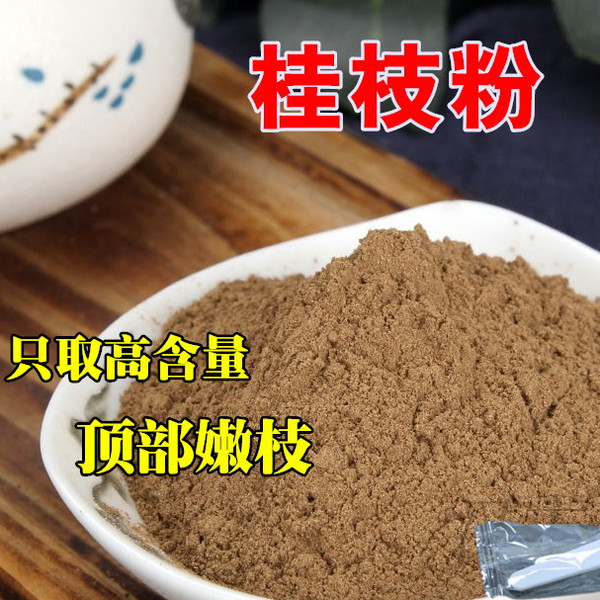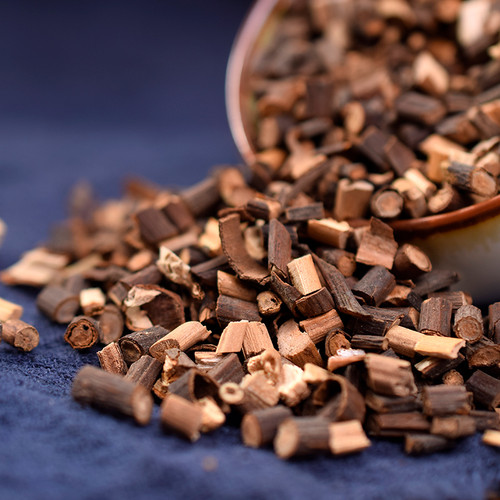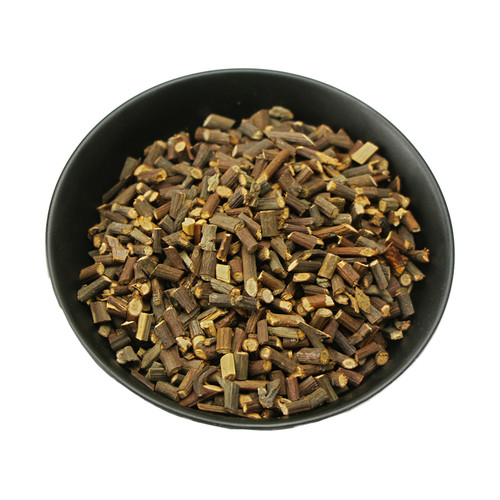Product Overview
Parts used: Dried young branches
TCM category: Warm/Acrid herbs that release the Exterior
TCM nature: Warm
TCM taste(s): Pungent Sweet
Meridian affinity: Spleen Heart Lung
Scientific name: Cinnamomum cassia
Other names: Chinese cassia, Chinese cinnamon
Use of cinnamon twigs (Gui Zhi) in TCM
Please note that you should never self-prescribe TCM ingredients. A TCM ingredient is almost never eaten on its own but as part of a formula containing several ingredients that act together. Please consult a professional TCM practitionner, they will be best able to guide you.
Preparation: Remove impurities, wash, soak in water, cut in thick slices and dry.
Dosage: 3 - 9 grams
Main actions according to TCM*: Adjusts the nutritive Ying and defensive Wei Qi. Relieves the Exterior through sweating. Warms and disperses Cold. Removes obstruction of Yang. Promotes the circulation of Yang Qi in the chest. Regulates and moves blood.
Primary conditions or symptoms for which cinnamon twigs may be prescribed by TCM doctors*: Common cold Abdominal pain Amenorrhea Arthralgia Edema Palpitations Rheumatoid arthritis Dysmenorrhea
Contraindications*: Do not use for those with Warm febrile diseases, those who are showing Heat signs, and should be used with caution for women who are pregnant or are bleeding heavily.
Common TCM formulas in which cinnamon twigs are used*:
For External, Wind-Cold conditions as well as tension and spasms of the upper back and neck combine cinnamon twigs with ephedra (Ma Huang), kudzu roots (Ge Gen) and white peony roots (Bai Shao).
For Dampness and edema combine cinnamon twigs with poria-cocos mushrooms (Fu Ling), polyporus (Zhu Ling), water plantain (Ze Xie) and atractylodes rhizomes (Bai Shu).
For angina combine cinnamon twigs with long-stamen onion bulbs (Xie Bai) and snake gourds (Gua Lou).
For coronary heart disease, rheumatic heart disease, myocarditis, arrhythmia, hyperthyroidism or neurasthenia combine cinnamon twigs with jujube dates (Da Zao), ginseng (Ren Shen), liquorice (Gan Cao), unprepared rehmannia (Di Huang), dwarf lilyturf roots (Mai Dong), hemp seeds (Huo Ma Ren) and fresh ginger (Sheng Jiang).
For harmonizing Internal and External symptoms, Cold and Heat, Excess and Deficiency and treating associated symptoms (common cold, influenza, pneumonia, indigestion, nervous exhaustion, etc.) combine cinnamon twigs with jujube dates (Da Zao), bupleurum roots (Chai Hu), crow-dipper rhizomes (Ban Xia), white peony roots (Bai Shao), baikal skullcap roots (Huang Qin), ginseng (Ren Shen), fresh ginger (Sheng Jiang) and liquorice (Gan Cao).
For Deficient Wind-Cold Exterior condition with symptoms such as colds, flu, fever, headache, intolerance to Wind and Cold or spontaneous perspiration combine cinnamon twigs with white peony roots (Bai Shao), fresh ginger (Sheng Jiang), liquorice (Gan Cao) and jujube dates (Da Zao).
For Blood Stagnation with symptoms of amenorrhea and dysmenorrhea combine cinnamon twigs with mudan peony bark (Mu Dan Pi), peach kernels (Tao Ren), red peony roots (Chi Shao) and poria-cocos mushrooms (Fu Ling).
For abdominal pain combine cinnamon twigs with honey (Feng Mi), white peony roots (Bai Shao), liquorice (Gan Cao) and dried ginger (Gan Jiang).
Key TCM concepts behind cinnamon twigs (Gui Zhi)'s properties
In Traditional Chinese Medicine (TCM), cinnamon twigs are plants that belong to the 'Warm/Acrid herbs that release the Exterior' category. Herbs that release the Exterior aim to to treat the early stages of diseases that affect the upper respiratory tract, the eyes, the ears, the nose, the throat or the skin. TCM believes that External diseases such as colds or allergies can only invade the body if the External environment overwhelms our Wei Qi (the TCM version of the immune system). In order to counteract this invasion Warm/Acrid herbs aim to induce sweating by increasing the flow of sweat to our capillary pores. The belief is that this will expel the disease from the body and stop it from invading further.
As suggested by its category cinnamon twigs are plants that are Warm in nature. This means that cinnamon twigs tend to help people who have too much "cold" in their body, although with less effect than a plant that would be Hot in nature. Balance between Yin and Yang is a key health concept in TCM. Those who have too much cold in their body are said to either have a Yin excess (because Yin is Cold in nature) or a Yang deficiency (Yang is Hot in Nature). Depending on your condition cinnamon twigs can help restore a harmonious balance between Yin and Yang.
Cinnamon twigs also taste Pungent and Sweet. The so-called "five elements" theory in Chinese Medicine states that the taste of TCM ingredients is a key determinant of their action in the body. Pungent ingredients like cinnamon twigs tend to promote the circulations of Qi and body fluids. That's why for instance someone tends to sweat a lot when they eat spicy/pungent food. On the other hand Sweet ingredients tend to slow down acute reactions and detoxify the body. They also have a tonic effect because they replenish Qi and Blood.
The tastes of ingredients in TCM also determine what organs and meridians they target. As such cinnamon twigs are thought to target the Spleen, the Heart and the Lung. In TCM the Spleen assists with digestion, blood coagulation and fluid metabolism in the body. In addition to regulating blood flow, the Heart is believed to be the store of the "spirit" which basically refers to someone's vitality. In addition to performing respiration, the Lungs are thought to be a key part of the production chain for Qi and the body fluids that nourish the body.
Use of cinnamon twigs (Gui Zhi) as food
Cinnamon twigs are also eaten as food.







